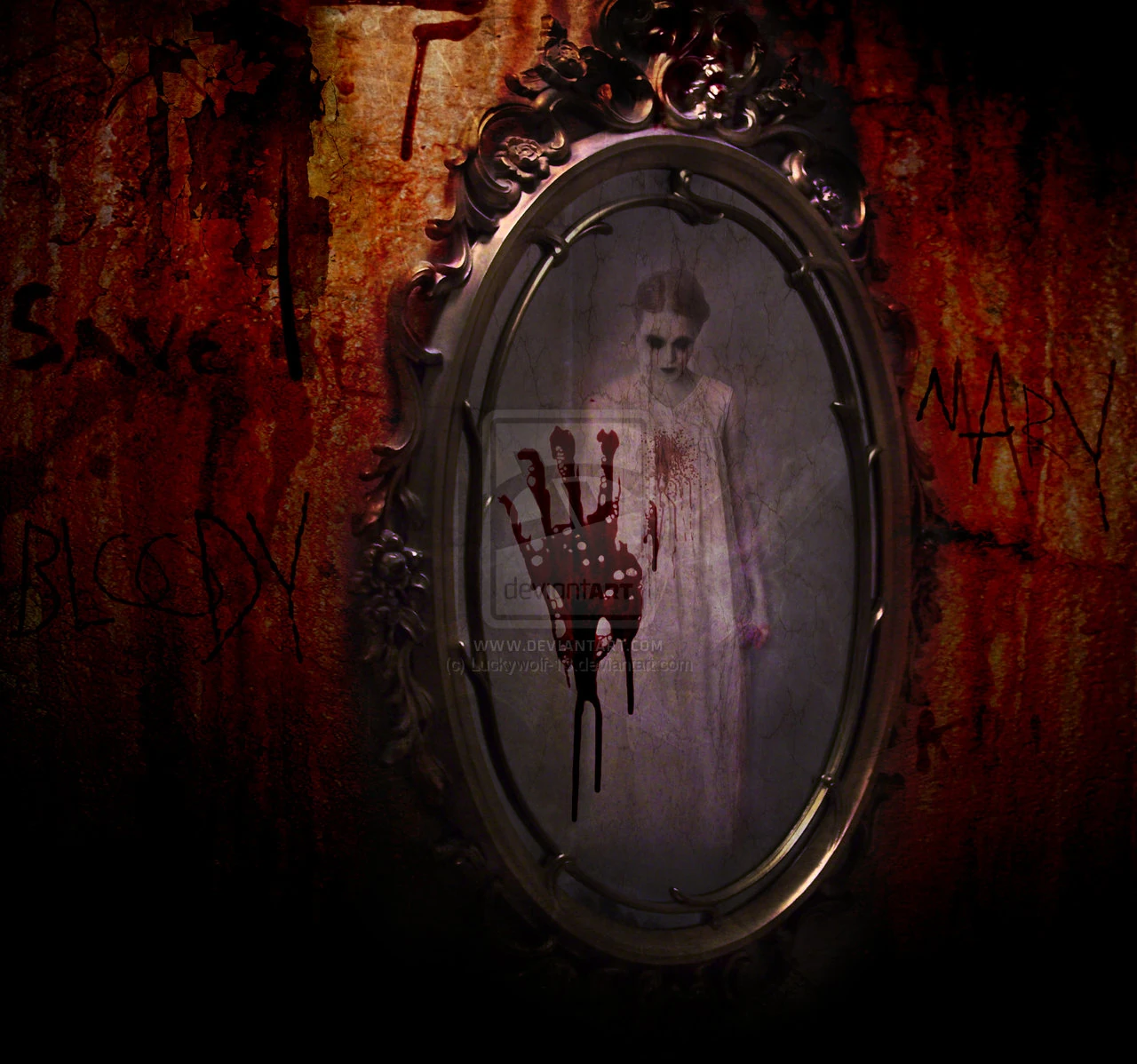Mirrors, Portals & Jinns: Why Reflections Terrify Us Across the World
There’s a reason my Nani used to cover mirrors after Maghrib.
As a child, I never questioned it. Every evening, just as the sun dipped and the sky turned that strange, unsettling blue, she’d toss a dupatta over the big vanity mirror in her room. “Is waqt na dekha karo—cheezain nikalti hain,” she’d warn. (“Don’t look at mirrors at this time—things come out.”) Things come out. Not things you can see, necessarily. But things that see you back.
Now, older—and more obsessed with the paranormal than ever—I think about those warnings constantly. Because it turns out we’re not the only culture that believes mirrors are more than glass and silver. Across the world, from Pakistan to suburban America, there’s a deep-rooted fear that mirrors are portals—not just to parallel worlds, but to something darker. Something watching. Something waiting.
In South Asian households, the fear is spiritual. Post-Maghrib, the veil between worlds is said to thin. That’s when jinns roam more freely, slipping through cracks in reality. Looking into a mirror at that time could open a door—especially if you're alone. Ask around and you'll hear the same stories: someone glimpsed a face that wasn’t theirs. A shadow moved when no one else was in the room. A reflection smiled a second too late.
My cousin swore she saw a girl in her mirror blink before she did.
That’s not an isolated story. Online forums and Reddit threads like r/pakistan and r/Jinn have hundreds of accounts. One user wrote, “My sister refused to sleep in her room after she saw her reflection tilt its head on its own… she thought she was imagining it, until it happened again, during Maghrib.” Another said his grandmother would never allow babies near uncovered mirrors after sunset—“Woh le jaate hain,” she’d whisper. (“They take them.”)
And then, you cross into Western folklore—and the energy doesn’t shift much. Instead of jinns, you get Bloody Mary.
Say her name three times into a mirror in the dark, and she’s supposed to appear—scratched face, hollow eyes, vengeance in her bones. A classic sleepover dare, yes, but its roots are older and deeper than a schoolyard game. Some say the myth links to Queen Mary I of England and her miscarriages. Others believe it’s tied to witchcraft. Either way, it plays on the same fear: say the wrong thing, look the wrong way—and something ancient might respond.
Kids from Boston to Birmingham have tried it, and the outcomes range from “nothing happened” to “I swear to God, the light flickered and she was behind me.” Whether or not you believe them, the fear is real. You only need to stand in front of a mirror at 3 a.m. and say the name to know your body will respond before your brain does. Your breath tightens. You wait for something that isn’t supposed to be real. But what if it is?
Why mirrors, though?
Because mirrors aren’t just surfaces. They’re symbols. For centuries, cultures have seen them as tools of divination, spirit communication, and soul-trapping. Ancient Chinese lore believed breaking a mirror meant shattering part of your soul. In Victorian England, people covered mirrors when someone died—afraid the soul of the deceased might get trapped inside. In Mexican culture, mirrors are used in Día de los Muertos altars to connect the living and the dead. Even in South Asian traditions, there's discomfort around mirror use at night—not out of superstition, but deep, inherited wariness.
What’s wild is how consistently these fears line up, no matter where you are. South Asians might fear jinns. Americans might fear Bloody Mary. But at the heart of it is a shared question: What if your reflection isn’t just a reflection?
Personally? I’ve always felt off around mirrors late at night. Especially when the house is still, when the fan hums low, and the mirror sits quiet in the corner of your eye. One time—around 2 a.m.—I walked past my bathroom mirror and caught something flicker. It wasn’t me. It moved too slow. I backed up. Nothing there. But the chill didn’t leave for hours.
And that’s the thing. You don’t have to see something in the mirror to feel something is watching. The unease, the hair-raising tension. It’s all baked into the way we engage with reflection. In fiction, mirrors show true selves, hidden selves, monstrous selves. In horror films, they’re always where the ghost appears first. It’s no coincidence that the climax of so many hauntings happens when someone finally dares to look.
So maybe Nani was right. Maybe there’s wisdom in fear.
Cover your mirrors after sunset. Don’t stare too long when you’re alone. And whatever you do—don’t speak to your own reflection like it’s someone else.
Because one day, it might answer back.


Who needs jinn bhai banda apni shakal dekh ke khud hi dar jai
ReplyDelete